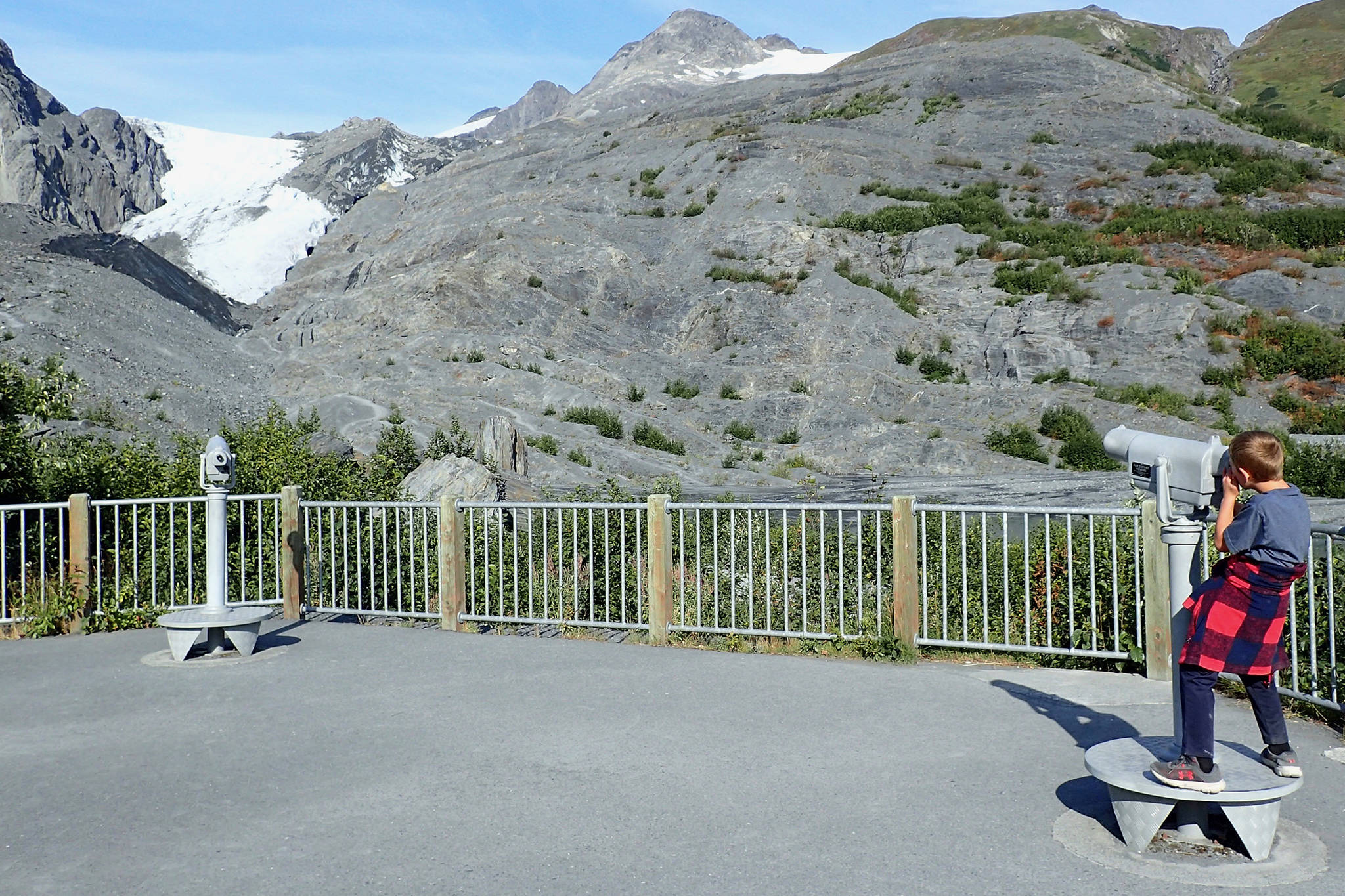If you want to live in a place where nothing changes, don’t live in Alaska.
A gold miner once told me that. He was referring to new houses that would pop up on the hillside across the valley, but his words ring true regarding natural Alaska, where recent, measurable differences are enough to make you dizzy.
A few researchers took a few breaths recently to put together a new document. In it, they summarize what scientists have observed in this place that is changing faster than anywhere else in the U.S.
Rick Thoman and John Walsh of UAF’s International Arctic Research Center, with help from editor Heather McFarland, have created the 15-page Alaska’s Changing Environment: Documenting Alaska’s physical and biological changes through observations.
[Gov says warming Arctic could be good for Alaska]
Team members decided to avoid technical language, and to include no predictions for the future. Here’s part of their current state of the state:
Wildfire seasons with more than 1 million acres burned (black patches the size of Rhode Island) have increased by 50% since 1990.
Before 2004, Fairbanks residents experienced only one summer with more than three weeks of significant wildfire smoke. Since then, we have breathed in five such summers, including in 2019.
The earliest ice breakup in recorded history of the Tanana River at Nenana was on April 14, 2019. The previous earliest was April 20. Nine of the 10 earliest breakup days there have happened since the mid-1990s.
People in the village of Northway felt the sting of -30F air about 40 days each year before 1960. In the last 10 years, Northway residents have experienced less than one month per year of such days.
Since 2014, thermometers from Ketchikan to Utqiagvik have recorded from five to 30 times more record highs than record lows. Homer has seen one of the most extreme percentages of record high temperatures since 2014, but all Alaska towns with enduring weather records have experienced way more record highs than lows.
Alaska had its warmest average air temperature in 2016 and its warmest all-time month in July 2019. Alaska air temperatures are rising twice as fast as other places in the country.
Autumns and winters have been much warmer in all regions of Alaska when compared to the period 1981 through 2010. During the past five years, however, summer temperatures have been close to normal for most of Alaska.
Tundra plants of Alaska’s North Slope have increased in greenness in recent years, showing more plant growth north of the Brooks Range. Growing seasons have become longer in Alaska.
Alaska’s snowpack now develops about a week later in the fall and melts almost two weeks earlier in the spring compared to the late 1990s.
Sea ice, the refrigerator of the world, is currently nowhere in sight from the Alaska coast. In September 2019, the ice that floats on northern oceans is a shrunken disc more than 500 miles toward the North Pole over the dark-water horizon. In Septembers past, the Chukchi and Beaufort seas had ice people could sometimes see from northern Alaska. “Nothing in the Alaska environment is changing faster than sea ice,” Walsh and Thoman wrote.
Because of the loss of that heat reflector, temperatures in the farthest north town in the United States have been way above average each October since 2001. In Utqiagvik’s recent past, sea ice was present on the nearby ocean during the entire month, or had at least formed by late October.
In summer 2019, ocean surface temperatures were 4 to 11 degrees F warmer than average all along the west coast of Alaska. The ocean surrounding Alaska is warmer now than at any time during the past 150 years.
Ocean temperatures have resulted in dramatic expanses of algal blooms, some with toxins that poison shellfish. Warm temperatures are affecting billions of organisms adapted to colder water.
Permafrost, ground that has remained frozen through the heat of at least two summers and sometimes thousands of them, is thawing everywhere. Scientists did not think they would see changes to “cold” permafrost in northern Alaska for decades, but even North Slope permafrost 50 feet underground is getting warmer.
Each year since 2002, 60 billion tons of Alaska glacier ice has melted, becoming ocean water.
In June and July 2019, thousands of salmon died as they migrated to spawning grounds in western Alaska, possibly because water is too warm for them. Yukon River water temperature at Pilot Station, about 100 miles above the mouth, was 64 F in summer 2019, the highest ever recorded.
After a career with the National Weather Service, Rick Thoman now works for the International Arctic Research Center. His sharpest tool is his Twitter account (@AlaskaWx), from which he fires pithy blurbs on sea ice, warm ocean temperatures and towns in Alaska breaking air-temperature records.
John Walsh earned the title of President’s Professor of Global Change at UAF in 2001, years before moose hunters noticed September nights were too warm to cool their hanging bags of flesh.
You can see and download Alaska’s Changing Environment at https://uaf-iarc.org/our-work/alaskas-changing-environment/.
• Since the late 1970s, the University of Alaska Fairbanks’ Geophysical Institute has provided this column free in cooperation with the UAF research community. Ned Rozell is a science writer for the Geophysical Institute.

